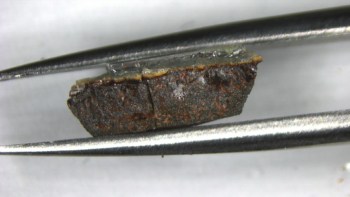Many modern technologies - such as printing and photolithography - are based on the controlled motion of drops of liquid on a surface. The droplets are driven across the surface by a phenomenon known as Marangoni flow - but the slow speeds involved have hampered existing techniques. Now Susan Daniel and co-workers from Lehigh University in the US have propelled droplets thousands of times faster than current methods by overcoming an effect that opposes Marangoni flow (S Daniel et al 2001 Science 291 633).
Liquid drops on a surface seek out areas that have a higher surface energy. The difference in surface energy produces a stress at the boundary between the liquid and the surface that pushes the droplet along. However, if the surface tension of the droplet varies across its surface, the droplet stretches out as it moves – this known as Marangoni flow. The surface tension can vary if the composition of the droplet is uneven – for example, if a volatile component of the liquid evaporates from the wall of the droplet – or if there is a temperature gradient across the droplet. But as the droplet stretches out into a thin half-cylinder shape, capillary forces emerge – and these oppose the flow.
Daniel and colleagues realised they could overcome the negative capillary flow by preparing a special surface for the droplets to travel across. They created a central water-repelling zone surrounded by a cooler, water-attracting surface. Steam was allowed to condense onto the water-repelling area, forming hot droplets – which quickly head towards the cool, water-attracting area. The high speed at which the droplet travels – up to 1.5 metres per second – reverses the direction of the capillary forces, and the droplet accelerates. The droplet coalesces with smaller droplets as it speeds across the surface, sweeping a path for fresh condensation to take place.
The phenomenon could improve many existing industrial processes. In particular, it could double the efficiency of traditional heat exchangers by rapidly dispersing the insulating layer of condensed steam that builds up on the ‘steam side’ of the heat-conducting surface, impeding heat exchange. Daniels and colleagues even suggest that their technique might help cool human body parts during cryogenic surgery.



